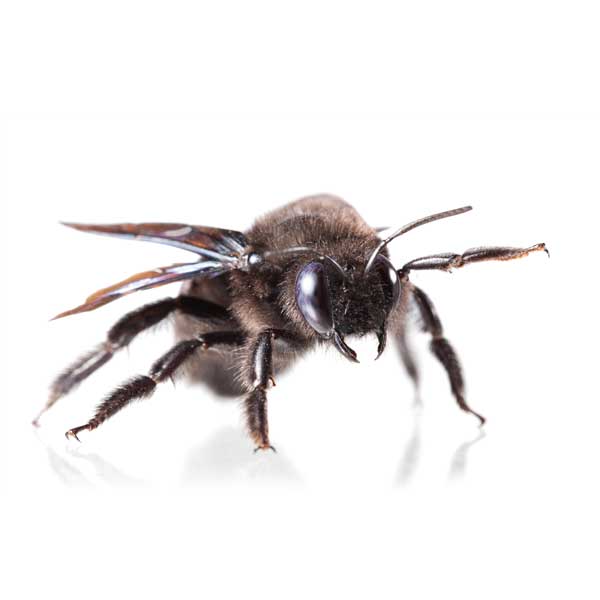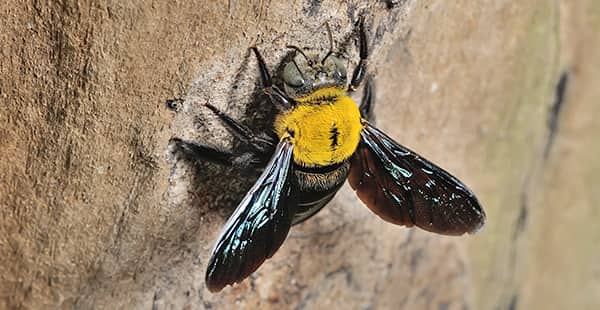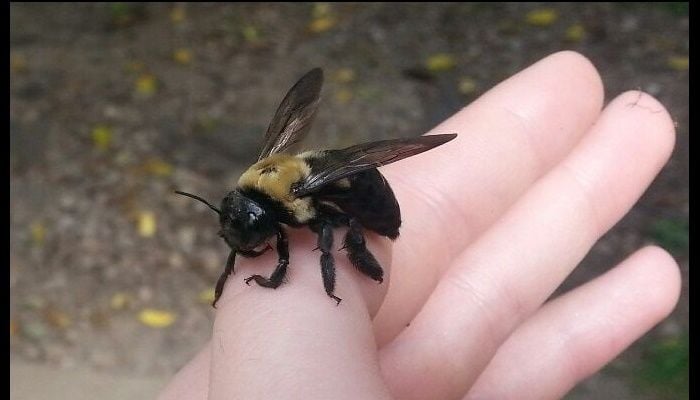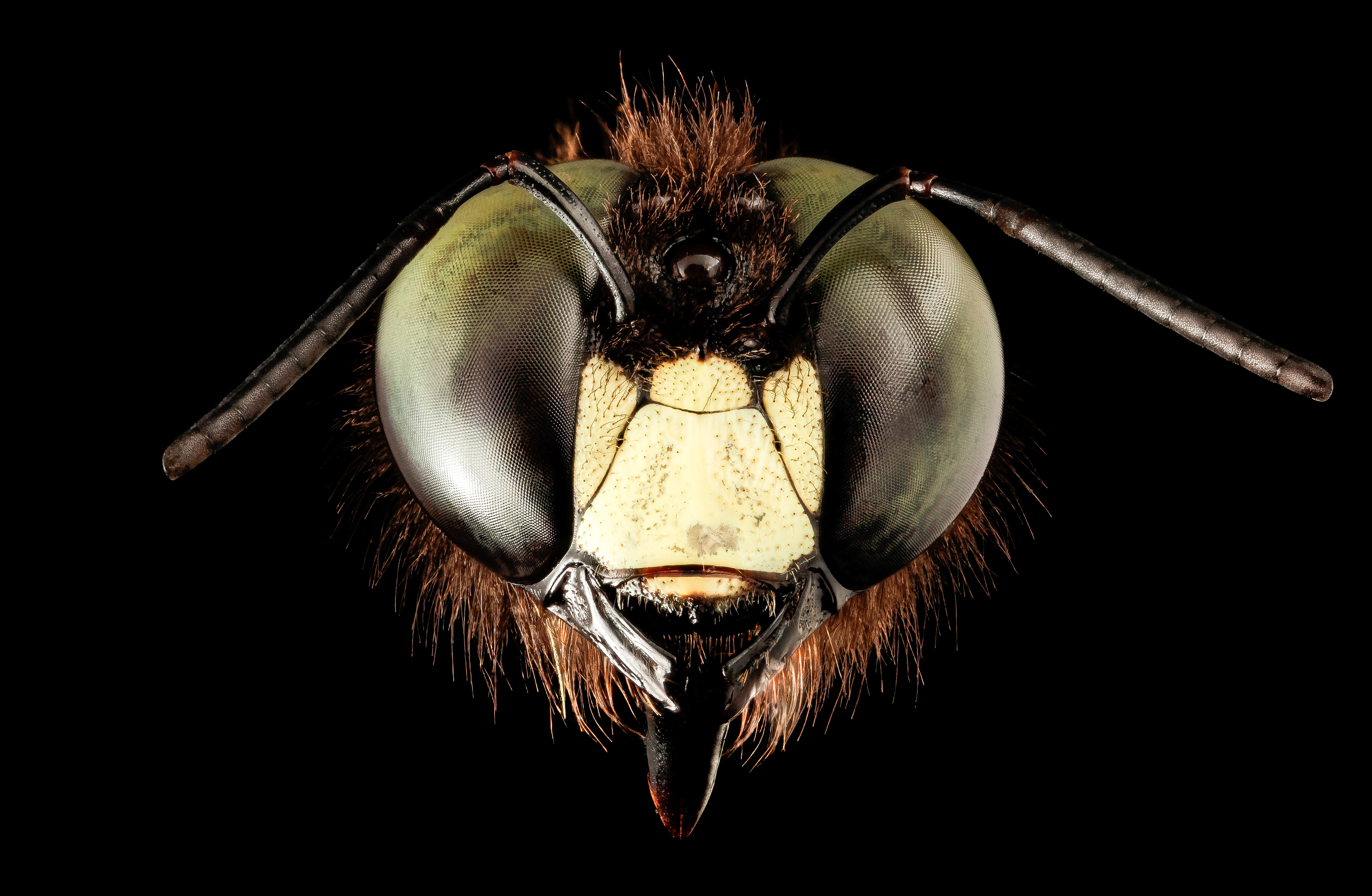This creates the entrance to the nest. Strong selection on mandible and nest features in a carpenter bee that nests in two sympatric host plants.

Carpenter Bee Identification Habits Behavior Heron Home Outdoor
Using her mandibles the female carpenter bee excavates a series of tunnels with chambers to house her offspring.

Carpenter bee mandibles. Thus mandibles are essential for the nesting process and the nest is required for egg laying and offspring survival. Some of their favorite types of wood include redwood cedar pine and cypress. Male carpenter bees Hymenoptera identifiable by the white spot between their mandibles look and act aggressive but actually cannot sting.
Inside the tunnels the females smooth out little cavities in which they will rear their brood. Carpenter bees get their name from their inclination to tunnel into wood. Male carpenter bees like other male bees are harmless and cannot sting.
Carpenter bees build their nests in dead stems or dry twigs of shrubs and trees. But what they do have are mandibles and they use their mandibles like teeth. As I said above the female has mandibles so shes more than capable of building her own nest from scratch.
They can bore into wood surprisingly efficiently simply by vibrating their bodies while pushing their mandibles into the wood. A hole made by a carpenter bee is often perfectly circular. She even uses the shavings from her excavation to create walls between the chambers.
Carpenter bees dont have teeth. Carpenter bees got there name from the love of building within wood. Carpenter bees description Xylocopa tenuiscapa or Xylocopa Koptortosoma tenuiscapa is a species of carpenter bee.
As with all bees only females have stingers. They are typically around 05 to 1 inch long and are usually black however some species have yellow or orange markings iridescent wings and even bright blue body hair. The bees do not eat the wood but use their strong mandibles to excavate tunnels.
Note the shiny black abdomen characteristic of carpenter bees. Unfortunately carpenter bees wont hesitate to build their nest in or near our homes. Carpenter bee Hymenoptera on crepe myrtle Lagerostroemia.
Carpenter bees are attracted to untreated and natural wood so they are likely to stay away from painted or varnished wood. The carpenter bee which resembles the bumblebee is shiny black robust in composition and can reach more than 1 inch in length. They prefer to live in wood where the female carves tunnels to host her eggs.
It is found only in South Asian and Southeast Asian countries Many species in this enormous genus are difficult to tell apart. These bees dont build nests like other bees instead they look for wood and tunnel into it like a carpenter. Carpenter bees prefer to drill in wood that is at least 2 inches thick.
Within each chamber the female carpenter bee lays an egg on a ball of pollen and nectar she collected. Carpenter bees are the opposite of bumblebees when it comes to preferred habitat too. The entrance is a little less than a half-inch wide close to the same diameter as her body.
Carpenter bees use their mandibles to tunnel through wood discarding it as they pass through. Female carpenter bees use their strong jaws mandibles to chew a perfect circle entrance hole and make a small chamber that will become her home. Even then they are more likely to deliver a bite with their sharp mandibles than to sting.
Basically they use them to cut and tear through wood they target for nest making. Any wood with a few hours of direct sunlight can become a spot for an egg chamber. Carpenter bees are sometimes confused with bumblebees however these bees have a black shiny hairless abdomen rather than the hairy bumblebee and they also have different nesting habits.
A female will use her powerful mandibles to chew a perfect half inch hole then makes a ninety degree turn and tunnels away 6-12 inches of wood. And once they find wood they want to nest in theyll use their mandibles to tear away in circular patterns that ultimately will fit their bodies perfectly. Most species are all-black or primarily black with some yellow or white pubescence.
Carpenter bees can sting but are relatively docile and generally will not sting unless handled or crushed.

Carpenter Bee Prevention Carpenter Bee Control Best Bee Brothers

3 Truths About Carpenter Bees That May Surprise You

Honey Bee Mandibles Have Many Uses Honey Bee Suite Honey Bee Bee Male Bee

Do Carpenter Bees Sting Are Wood Bees Aggressive Best Bee Brothers

Show Me A Carpenter Bee Carpenter Bee Anatomy Diagram Best Bee Brothers

Carpenter Bee Arthropod Museum

Who S To Blame Masons Or Carpenters Honey Bee Suite

Carpenter Bee Mandibles Goosie Gander Keeping In Touch When I Can Flickr

Carpenter Bee Control Dave S Garden

Do Bees Have Teeth Honey Bee Hq

Bee Mandibles Page 1 Line 17qq Com

Carpenter Bee An Overview Sciencedirect Topics
A Carpenter Bee Exhausted Myrmecos

Carpenter Bee Control Dave S Garden

Eastern Carpenter Bee Wikiwand

Carpenter Bees Damage Wood By Boring Male Carpenter Bee Youtube

3 Truths About Carpenter Bees That May Surprise You



